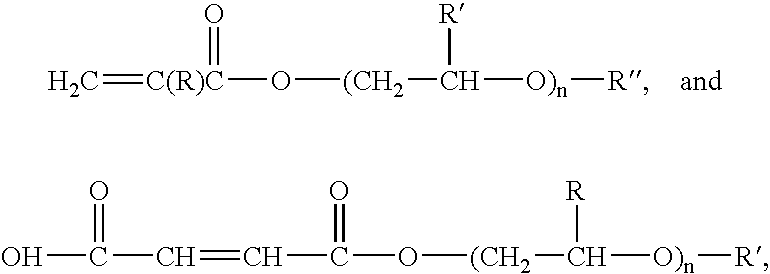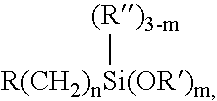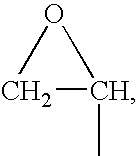Sealant compositions comprising colloidally stabilized latex and methods of using the same
a technology of colloidal stabilized latex and composition, which is applied in the direction of sealing/packing, wellbore/well accessories, chemistry apparatus and processes, etc., can solve the problems of increasing the overall cost of constructing and maintaining the wellbore, and the unstableness of traditional latex emulsions prepared by emulsion polymerization
- Summary
- Abstract
- Description
- Claims
- Application Information
AI Technical Summary
Benefits of technology
Problems solved by technology
Method used
Image
Examples
example 1
[0028] First, LATEX 2000 latex sold by Halliburton Energy Services, Inc. (i.e., a styrene butadiene latex prepared by conventional methods) was added dropwise to an aqueous solution containing 25 weight (wt.) % sodium chloride (NaCl) salt. Instantaneous precipitation was observed upon contact of the latex with the salt solution. The same procedure was then performed using 10 mL of BS 2100 latex, i.e., a colloidally stabilized latex. No precipitation was observed in the solution containing the BS 2100 latex even after several days.
example 2
[0029] A 40 gram mixture containing a 1:1 weight ratio of LATEX 2000 latex and water was prepared. Then 33 wt.% calcium chloride (CaCl2) solution in water was added dropwise to the latex-containing solution. Most of the LATEX 2000 latex had precipitated out of the solution after 0.7 gram of the CaCl2 salt had been added to the solution. The same procedure was then performed using BS 2100 latex. No sign of precipitation was observed even after 10 grams of CaCl2 salt had been added to the solution containing BS 2100 latex, and the mixture was stable for several days.
example 3
[0030] A control sample of a cement slurry having a density of 16.4 pounds per gallon (ppg) and comprising LATEX 2000 latex, water, class H Portland cement, and a small amount of a STABILIZER 434B surfactant stabilizer available from Halliburton Energy Services, Inc. was prepared. The control sample was cured for 72 hours at a temperature of 190° F. and a pressure of 3,000 psi, followed by measuring, compressive strength and tensile strength. The same properties were measured for a control sample of the same density made from cement and water. In addition, two cement slurry samples containing BS 2100 latex, water, and class H Portland cement were prepared. One sample also contained a small amount of STABILIZER 434C surfactant stabilizer and the other sample contained WOLLASTOCOAT M16 fibers (i.e., a wollastonite mineral coated with an organic hydrophobic material). After curing those samples in the same manner as the control sample was cured the compressive strength and the tensile ...
PUM
| Property | Measurement | Unit |
|---|---|---|
| density | aaaaa | aaaaa |
| pressure | aaaaa | aaaaa |
| temperature | aaaaa | aaaaa |
Abstract
Description
Claims
Application Information
 Login to View More
Login to View More - R&D
- Intellectual Property
- Life Sciences
- Materials
- Tech Scout
- Unparalleled Data Quality
- Higher Quality Content
- 60% Fewer Hallucinations
Browse by: Latest US Patents, China's latest patents, Technical Efficacy Thesaurus, Application Domain, Technology Topic, Popular Technical Reports.
© 2025 PatSnap. All rights reserved.Legal|Privacy policy|Modern Slavery Act Transparency Statement|Sitemap|About US| Contact US: help@patsnap.com



